Winter camping may not be for everyone, but for those who are up for the adventure, it can be an unforgettable experience. Not only does it offer a different kind of peace without the crowds, but it also allows you to appreciate the unique beauty of snow without the distraction of irritating mosquitoes and lots of bears. However, proper preparation and equipment are key to successful winter camping.

As someone who has camped in negative temperatures, low as -20°C, I can assure you that winter camping can be an incredible experience with the right tips and tricks. So, without further ado, here are 10 essential tips for safe and enjoyable winter camping:
1. Pack proper gear for winter camping
Tent: First and foremost, a winter tent is a must. Look for a tent that’s designed for four seasons or at least three seasons, with a second layer that goes all the way to the ground to protect against snow and wind. Ideally, the tent should also have a vestibule especially when camping in the winter.
These small, covered areas at the entrance of the tent provide additional storage space for gear and can be used as a cooking area, keeping the inside of the tent clean and dry. In addition, vestibules help keep snow and wind out of the tent, providing an additional layer of protection against the elements. When choosing a tent, look for one with a vestibule that’s large enough to accommodate your needs. This small addition can make a big difference in the comfort and practicality of your winter camping trip.
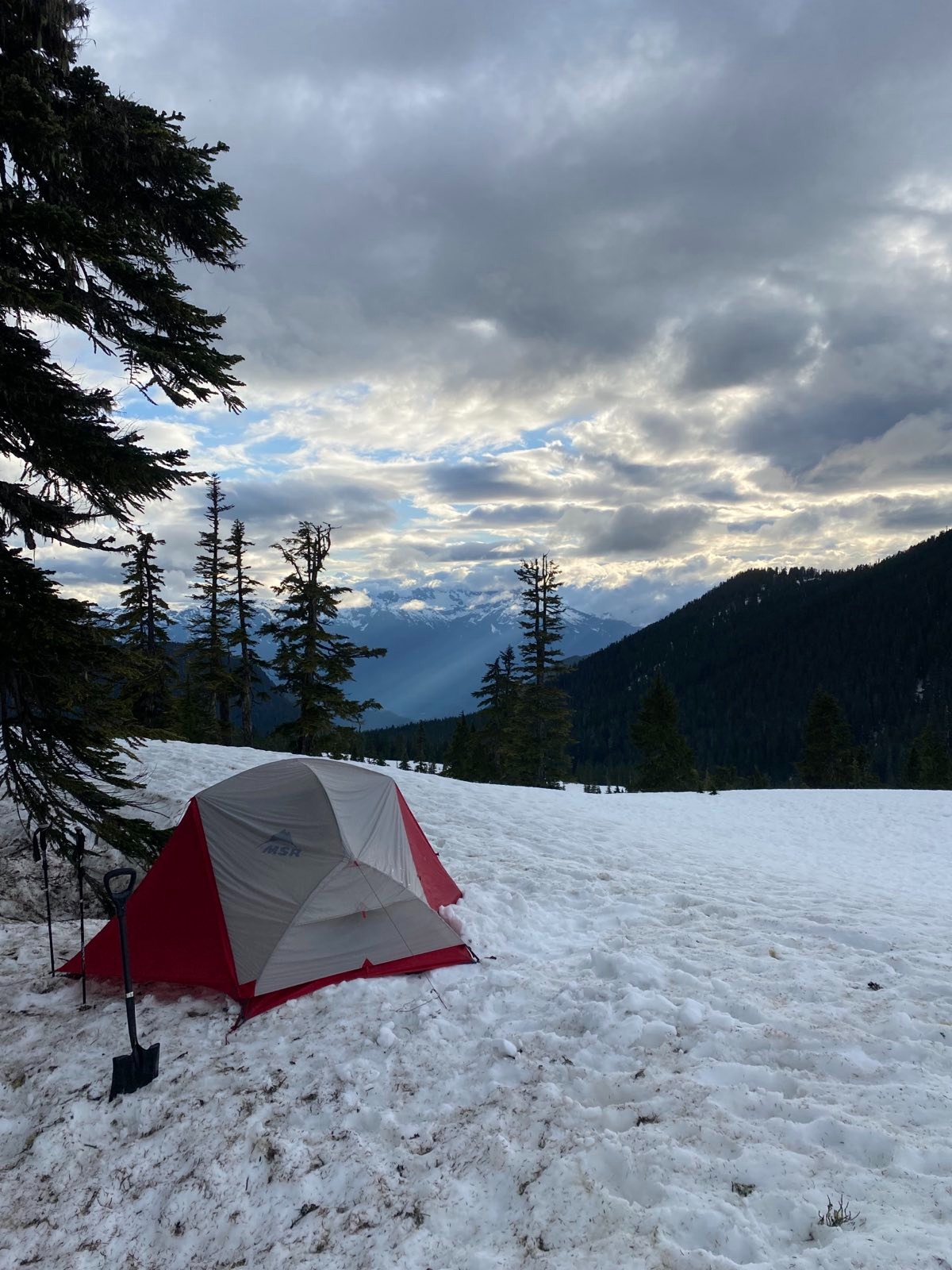
Elfin Lakes
Sleeping bag: Next, you’ll need a warm and comfortable sleeping bag. A sleeping bag with down filling in a sarcophagus format is ideal for keeping you warm in freezing temperatures. Be sure to choose a sleeping bag suitable for the temperature you’ll be exposed to.
Sleeping pad: To add an extra layer of warmth and comfort, bring an insulated mattress. This will provide a comfortable sleeping surface and help keep you warm by preventing your body heat from escaping into the ground. One sleeping pad that I highly recommend is the Big Agnes Insulated Sleeping Pad Ultra Air Core. This pad features a high-volume valve for easy inflation and deflation, PrimaLoft Silver insulation, and a heat-reflective barrier to keep you warm in even the coldest temperatures. With the right sleeping pad, you can wake up feeling refreshed and ready for another day of winter camping adventure.

Thermal insulator: In extremely cold conditions having a thermal insulator will provide extra insulation and comfort. But, using a thermal insulator correctly is essential to ensure maximum warmth and comfort during your winter camping trip.
When setting up your camping equipment, place the thermal insulator on the ground with the metallic side facing upwards. This will minimize radiant heat loss by allowing the metallic part to reflect part of the heat radiated by your body back to you. The foam part of the insulator should face downwards and should be in contact with the ground to insulate against the cold. Once the thermal insulator is in place, add the sleeping pad and a sleeping bag. By using your thermal insulator correctly and adding additional layers, you can create a warm and comfortable sleeping surface that will help you stay cozy throughout the night.

Image by REI
Chair: When it comes to winter camping, it’s not just about getting a good night’s sleep – you also want to be comfortable during the day. After all, you’re going to be spending plenty of time sitting around your campsite, whether it’s reading a book or enjoying a cup of hot chocolate. That’s where a camping chair comes in handy. Bringing a lightweight, collapsible camping chair is a great way to make your winter camping experience more comfortable and enjoyable. Alternatively, you can use your thermal insulator as a cushion to avoid sitting directly on the snow. Trust me, your backside will thank you! Whatever option you choose, taking the time to prioritize your comfort during the day can make a big difference in your overall winter camping experience.
2. Layer Up: Stay Warm with Essential Winter Clothes
When it comes to winter camping, choosing the right clothing is just as important as having the right equipment. One key tip to keep in mind is to avoid wearing cotton clothing next to your skin. This is because cotton has a tendency to absorb sweat and moisture, such as rain or snow, and retain that moisture, making you feel colder and increasing your risk of hypothermia.
Instead, opt for second-skin clothing made of merino wool or synthetic fabrics like polyester. These materials are designed to regulate body temperature, wick moisture away from the skin, and resist odors. When choosing your clothing, pay attention to the percentage of merino wool in the fabric. For optimal warmth and comfort, aim for clothing that’s at least 80% merino wool or more.
It’s also essential to wear thermal socks and gloves and a toque to protect against the cold and wind. A down puffy jacket is a great choice for added warmth on extremely cold days, while a waterproof jacket is crucial to protect against wind and snow and keep your clothing dry. Ski pants or other waterproof pants are also essential to protect against moisture. When we go snow camping, we dress in layers, starting with merino wool second skin, adding a sweatshirt, and topping it all off with a puffy jacket and waterproof jacket. At the bottom, we wear merino wool and ski pants for extra warmth and protection.

03. Avoid Frostbite: Precautions for Winter Camping
Our extremities, such as hands, feet, nose, and ears, are the parts of our body most exposed to freezing temperatures. That’s why it’s important to take extra care to protect these areas. Always wear gloves, a toque, and winter boots with thermal insulation and waterproofing to keep your feet warm and dry. We have been use the Columbia Waterproof Omni-Heat Winter Boots, and we love them. Highly recommended.
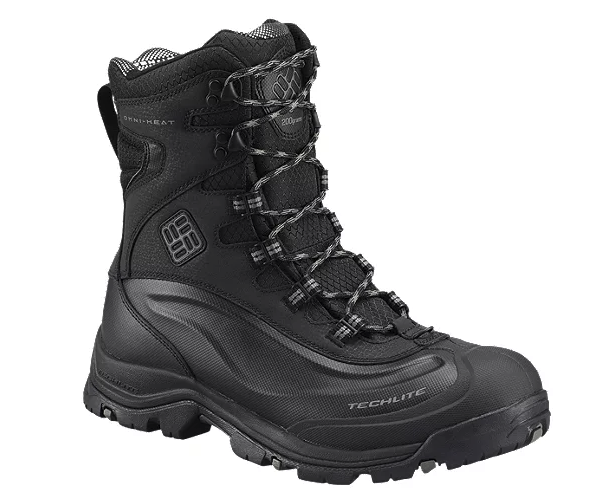
Image by Sport Chek
For added warmth, it’s a good idea to use hand and foot warmers. We’ve tested several brands and found that “Hot Hands” warmers are the best. We like to place them inside our gloves and socks to keep our hands and feet warm and comfortable.
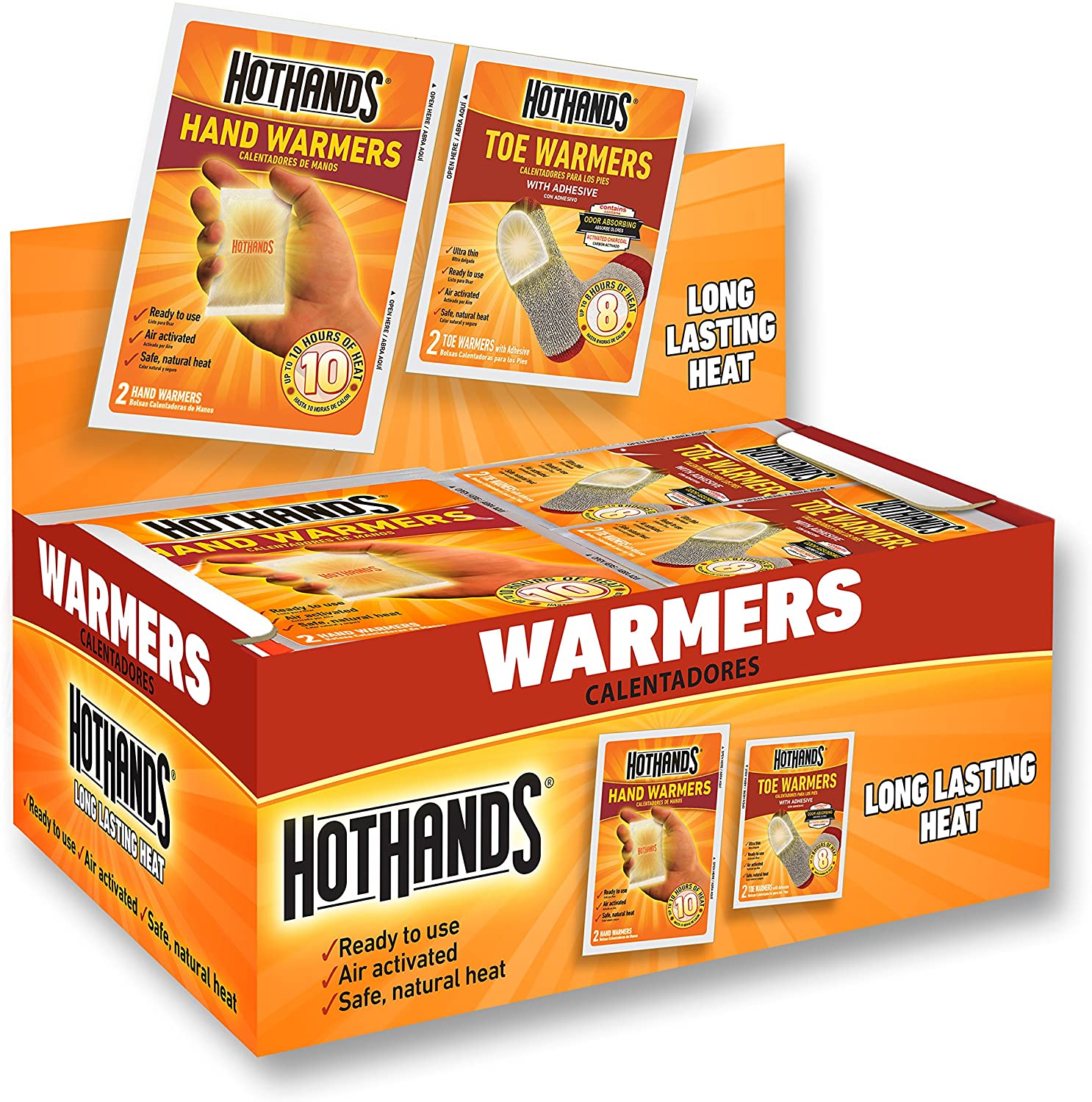
Image by Amazon
04. Stay Cozy All Night with a Thermal Bottle
One of the best ways to stay warm and comfortable during winter camping is always to have a thermos with hot water, tea, or coffee on hand. This will not only keep you warm from the inside out but also provide a comforting drink to enjoy during your camping trip.
But did you know that your thermos can also be used to heat your sleeping bag before going to bed? Since we learned this tip, our nights in the cold have been much more comfortable. Here’s what we do: before bed, we always boil water, pour it into the thermos, and then place it inside the sleeping bag to remove that chill that always seems to linger before bedtime. We prefer using an aluminum bottle because it heats quickly, but plastic also works. Just be careful not to burn yourself, and make sure to close the cap on the bottle you choose. Using your thermos as a multi-use tool, you can enjoy added warmth and comfort during your winter camping trip.

Image by REI
05. Cook Up: Equipment and Tips for Winter Camping
Cooking during winter camping can be both challenging and rewarding. However, having the right cooking equipment is crucial. Before you set out on your trip, make sure to test your stove to ensure it’s not clogged and is working correctly. Running out of stove and gas means running out of hot water and food, which can quickly dampen your camping experience. When it comes to gas, liquid fuel is the best type to use in winter. While butane works too, it requires more attention, and using a wooden base can improve its performance. This is because contact with snow can cause the gas to freeze.
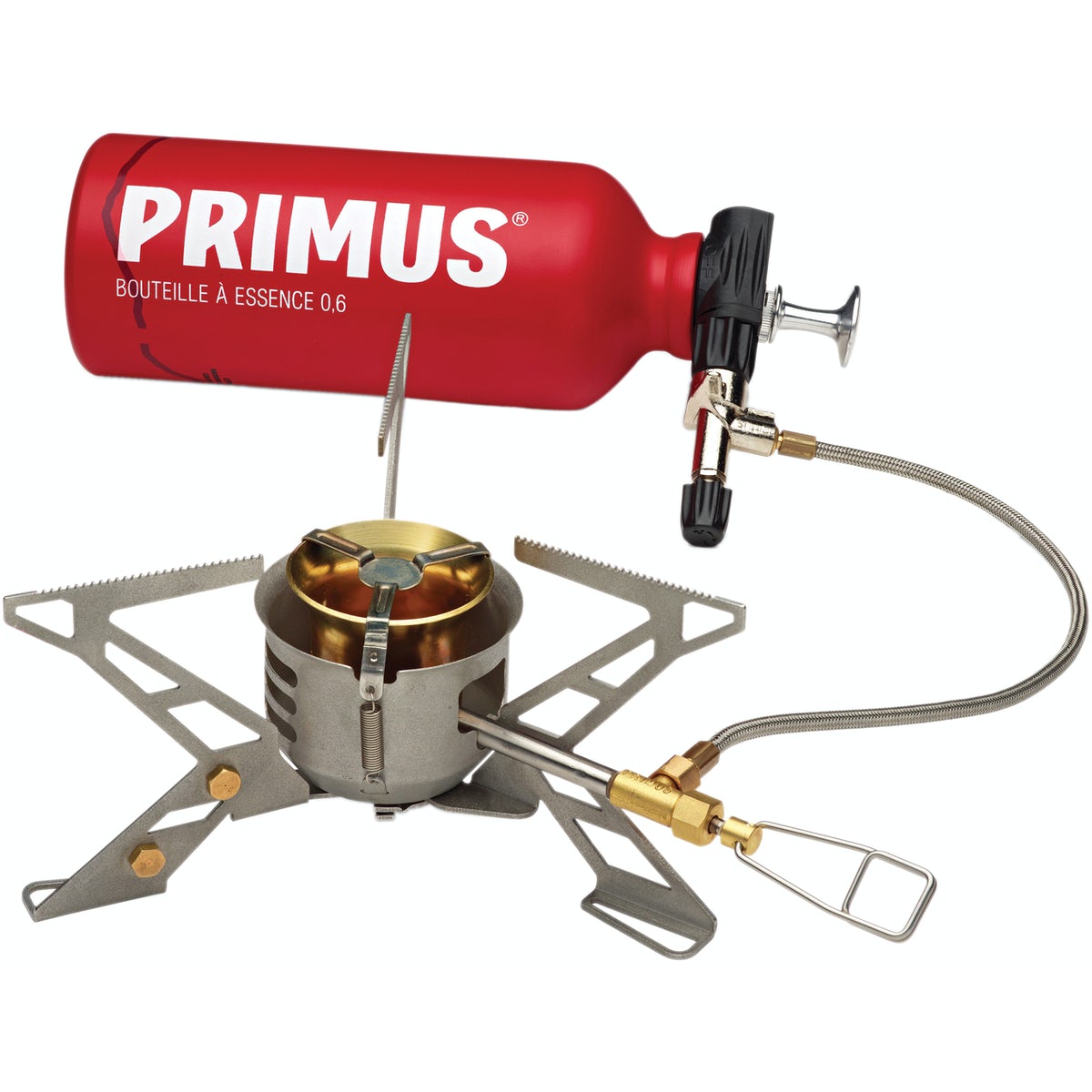
Image by MEC
06. Be Prepared with the 10 Essential
As with any camping trip, it’s essential to be well-equipped with the ten essential items. These items can make all the difference in ensuring a safe and enjoyable camping experience. To get the full list and more information about each item, be sure to check out our special post dedicated to 10 Essentials for any Hiking and Camping.
Whether you’re a seasoned camper or new to the activity, having these essential items with you can provide peace of mind and make your winter camping trip a success. Don’t leave home without them!
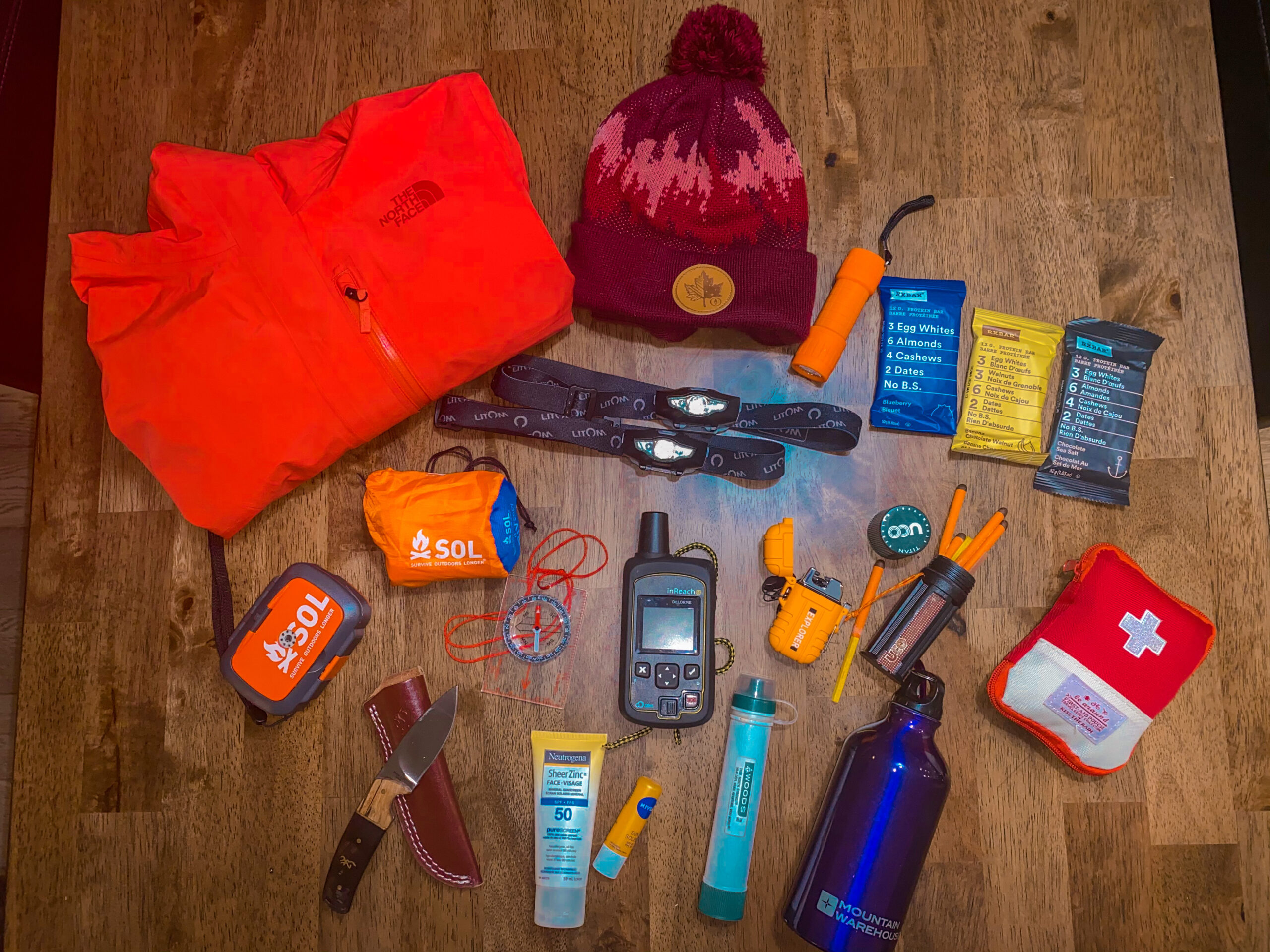
07. Don’t Get Caught in the Dark
As winter campers, it’s important to be mindful of the time the sun sets in the region where you’ll be camping. This way, you can plan your activities accordingly and avoid getting caught in the dark. If you’re planning on going on a snowshoe trail, be sure to factor in the time it will take to complete the trail and return to camp before sunset. And, as always, don’t forget to bring the ten essential items with you on your adventure. In particular, make sure to pack a reliable headlamp with extra batteries. It’s worth noting that batteries tend to drain much faster in the cold, so having a backup set is crucial. By being prepared and aware of sunset time, you can enjoy your winter camping experience to the fullest.
08. Set up tent in the Snow
One important thing to keep in mind when setting up your winter campsite is where to put your tent.
Fluffy and loose snow might seem like a comfortable spot to lay your head, but it can quickly become a problem as your body heat melts the snow and makes the ground uneven and uncomfortable to sleep on. That’s why it’s a good idea to walk with your snowshoes or boots under the area where you plan to pitch your tent. This will help to compact the snow and create a more stable and comfortable base for your tent.

09. Stay Safe in Avalanche Territory
As beautiful as snow-covered mountains may be, it’s important to remember that they can also be dangerous, particularly when it comes to avalanches.
If you plan to travel in areas where avalanches are a possibility, it is crucial to be equipped with the proper safety gear and to know how to use it. This includes an avalanche transceiver, probe, and snow shovel. It’s also essential to have participated in an avalanche and rescue course, so you can better understand how to use these tools in an emergency. While it’s not something any of us wants to think about, being prepared can mean the difference between life and death in such a dangerous situation.
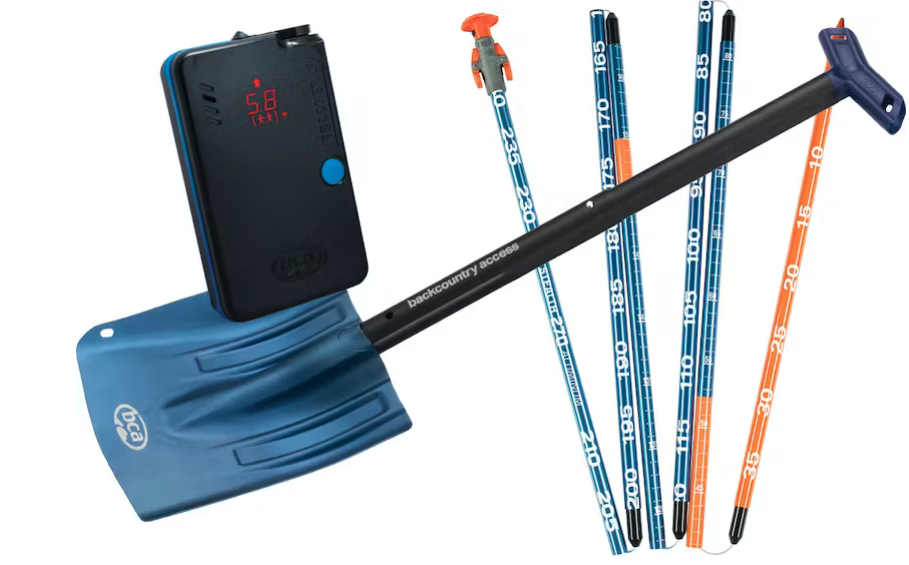
Image by MEC
10. Leave a Trip Plan
When it comes to winter camping, it’s crucial to have and leave a trip plan. It means leaving a detailed itinerary with a friend or family member, also bringing digital navigation equipment like a map (with a paper backup as well), and having a satellite communicator. In case of emergency, it’s important to have a way to ask for help and communicate with loved ones. We never embark on a camping trip without our satellite communicator. It’s a reliable tool that allows us to communicate with family via text, provides emergency rescue services with 24-hour monitoring, and even has GPS tracking capabilities.
Remember, always prioritize safety and be prepared before heading out on any outdoor adventure.

So, we hope that these tips have helped you feel more confident in your winter camping adventures. So dress warmly, grab your gear, and get ready to make unforgettable memories in the winter wonderland!

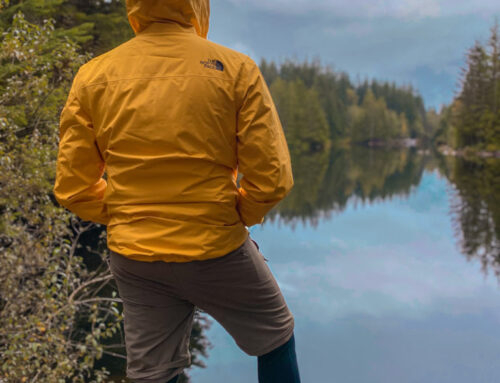

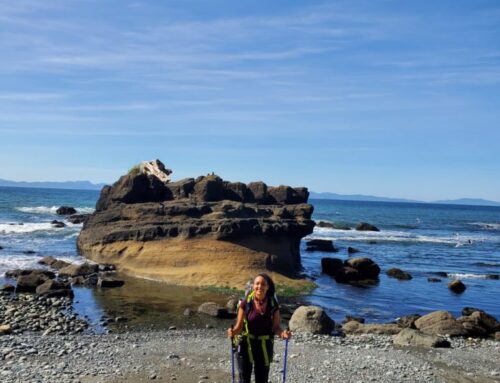
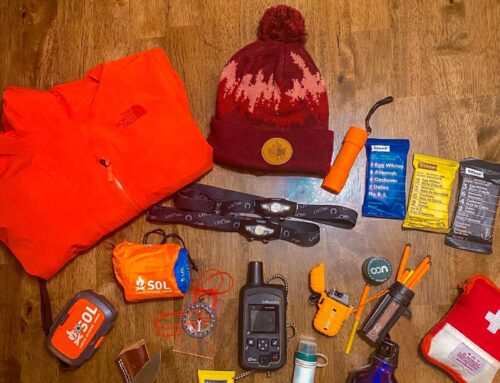
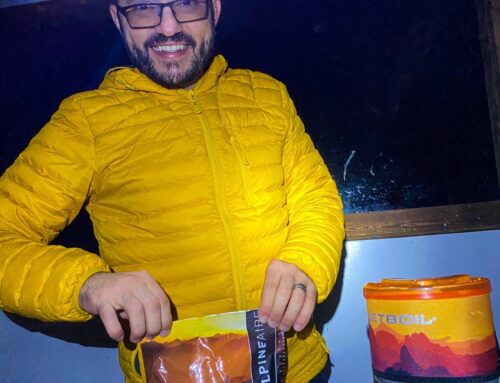
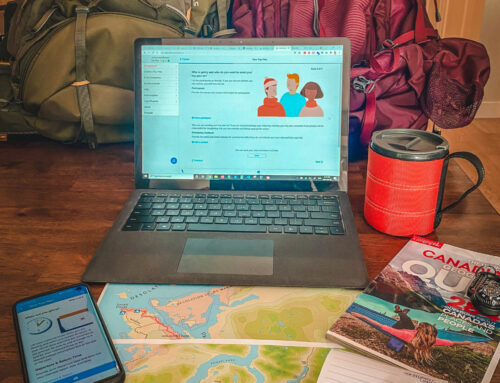
Leave A Comment